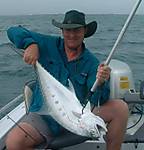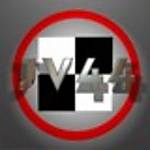1⁄48Polikarpov I-16 Type 29
7
Comments
The original
The Polikarpov I-16 was a Soviet fighter from the 1930's years. It was the first aircraft with retractable landing gear and cantilever low-wing to be built in a large serie. The type became famous during the Spanish civil war on the side of the Republican Government and during the initial phase of the German assault on the Soviet Union ("Barbarossa").The production of the first version I-16 type 1 began in the middle of 1934. The model was constantly developed further. One year later the I-16 was presented to the people of the Soviet Union on the May 1st parade in Moscow and a little later to the international public during an exhibition in Milan.
For the support of the Republicans in the Spanish civil war, the Soviet Union supplied the I-16 to the Spanish Air Forces. On 31 October 1936 the first 31 machines arrived. They soon received there the surname "Mosca" (fly). Super Mosca was the surname of the 157 machines of the type 5 and 6 as well as the 136 type 10s. After the end of the Second World War, 22 machines were still airworthy. 30 others were built in Jerez under license and remained in service until the end of 1953. On the opposite side the I-16 was called "Rata" (rat). Against the double-decker fighters of the putschists, like the Heinkel He 51 used by the Germans of the Legion CONDOR, it worked excellently thanks to its speed and close turning radius. The I-16 was also a though opponent for the first Messerschmitt 109s ( B, C and D variants) but in 1938/39 it was obsolete when compared to the Luftwaffe's main fighter, the BF 109-E.
The I-16 was also exported to China, the aircraft being used against the Japanese troops in 1937 and 1938. During the Soviet-Japanese border disputes of 1939, one more time, the I-16 fought against the Japanese. it alsi saw service during the Finnish winter war of 1939/40.
At the beginning of the "Large Patriotic War" in 1941, most of the I-16 units were destroyed on the ground by the Luftwaffe. The I-16 had hopelessly became outdated against the airplanes of the Germans. At the very beginning of the battle, German pilots could still be surprised by the unusual agility of the I-16, but soon the last chance for the Soviet pilots was to use the extremely risky "Taran" attacks (ramming of the opponent aircraft). At the end of of 1943 the Polikarpov was finally taken off from the front employment and replaced by more modern types.
Technical data
The I-16 was a small monoplane with a fuselage made of aluminum (front) and plywood (rear). The wing was made of two steel tubes with Duralumin ribs and fabric covering. The ailerons ran over the entire wingspan and served at the same time as landing flaps. The main landing gear had to be manually drawn in and the tail skid was rigid.The model
The kit of the I-16 type 29 is from Eduard and provides a high level of detail. In the box, one can find an additional sheet of masks for the windscreen and the tyres, and a photo etched fret which holds the seatbelts, the radiator shutters and the visor for the machine guns.The assembly of the model is not very eventfull since the fit of the parts is excellent. Only the engine mockup and the exhaust pipes are not that good. However, I solved the problem by using aftermarket replacement parts from Quickboost. Both sets are very affordable and are easy to find.
So that it is still possible to see the engine later, I replaced the kit's machine guns with thin brass tubes. These were firmly glued to the fuselage to act as guides for the radiator ring. The latter can be separated from the rest of the model when needed.
The pilot of the machine I have done is still unknown today, however, on the only known photo of that aircraft, one can see Slesarchuk, Gazin and Perevera. So it is highly possible that one of the three flew this I-16. Whether the machine also possessed a blue tail unit, is impossible to ascertain. However, I found the paint sheme to be eye catching with it's big red star on the propeller spinner, so I did follow the instructions blindly. Also interesting how the black camouflage was applied over the exhaust pipes on the left fuselage side. It gives the whole machine an original touch depsite it's otherwise so uniform „Russian green/black“ pattern.
After the lacquer finish, the model received a subtle oil wash since in the original picture it is noticable that the finish of the original aircraft was almost immaculate, as if it has been freshly painted.
The GAZ-AS-2 is the UniModels kit and the base plate from Mark58. Once combined, they make into a fine Diorama which makes the "dwarf" into a real eye-catcher.
Comments
Beautiful work. Very nice and clean and great detail on this little gem.
Hermon
OCT 03, 2009 - 02:41 PM
Beautiful work on an unusual subject. Love the detail and the finished scene is great.
OCT 03, 2009 - 07:59 PM
Hi Lars-Owe
Very nice indeed! The new engine is definitely a huge improvement over Eduard's simple blank - and it's great to see the little GAZ starter truck builds up so nicely.
All the best
Rowan
OCT 03, 2009 - 08:14 PM
It's very nice
But it would be better if there was 2-3 figures
Cheers Nick
OCT 06, 2009 - 08:18 AM
Copyright ©2021 by Lars-Owe Paetzold. Images also by copyright holder unless otherwise noted. The views and opinions expressed herein are solely the views and opinions of the authors and/or contributors to this Web site and do not necessarily represent the views and/or opinions of AeroScale, KitMaker Network, or Silver Star Enterrpises. Images also by copyright holder unless otherwise noted. Opinions expressed are those of the author(s) and not necessarily those of AeroScale. All rights reserved. Originally published on: 2009-10-03 00:00:00. Unique Reads: 8675































